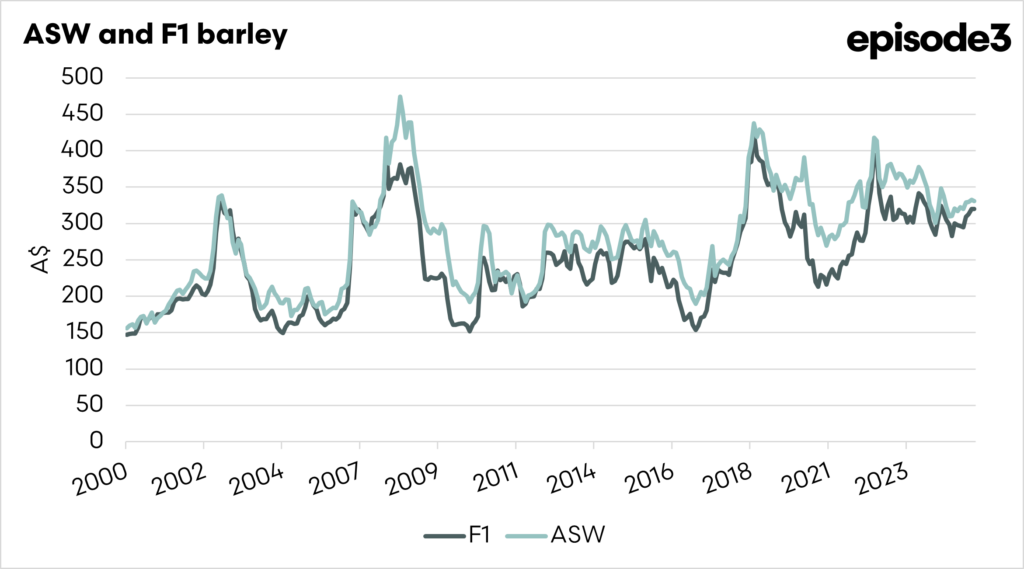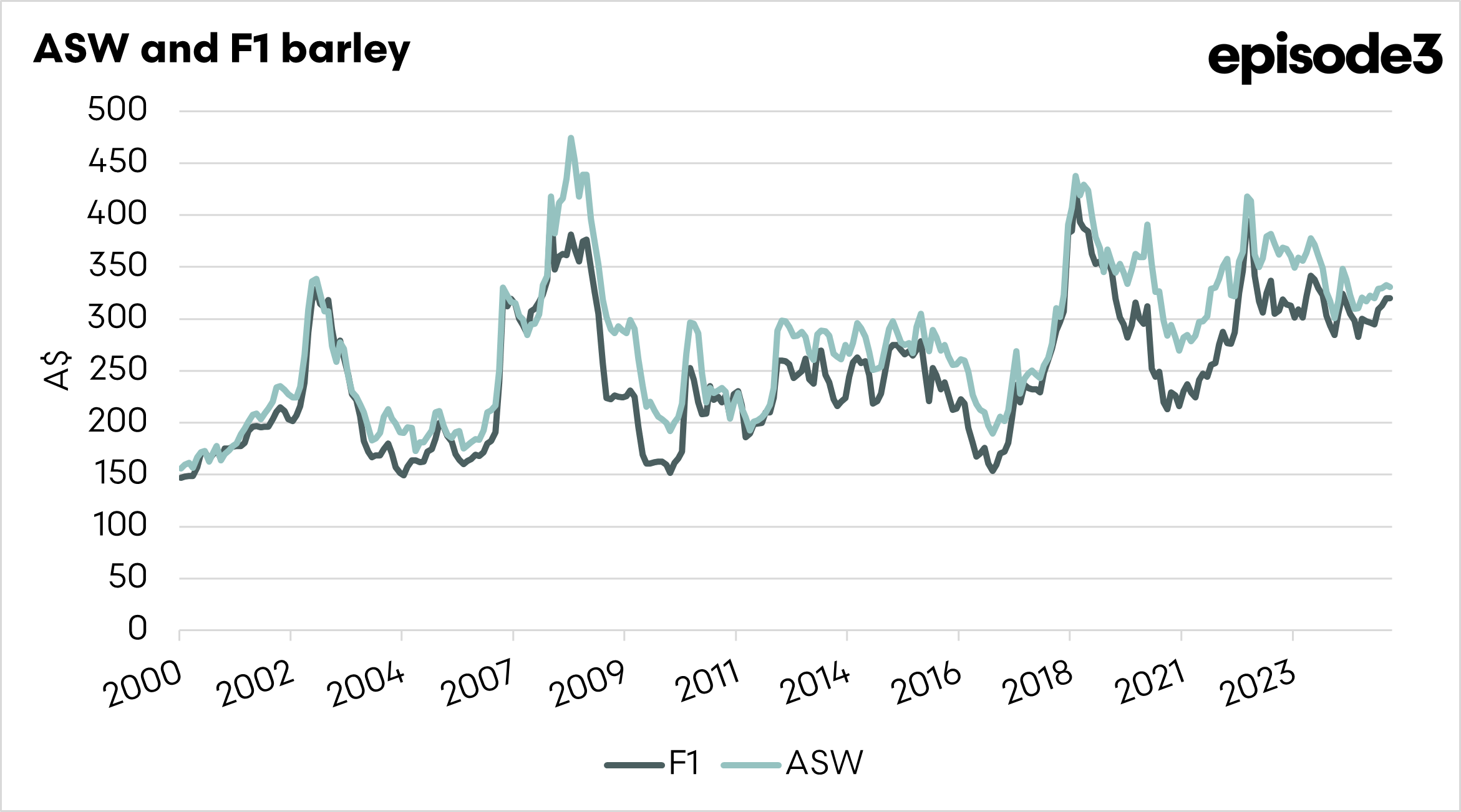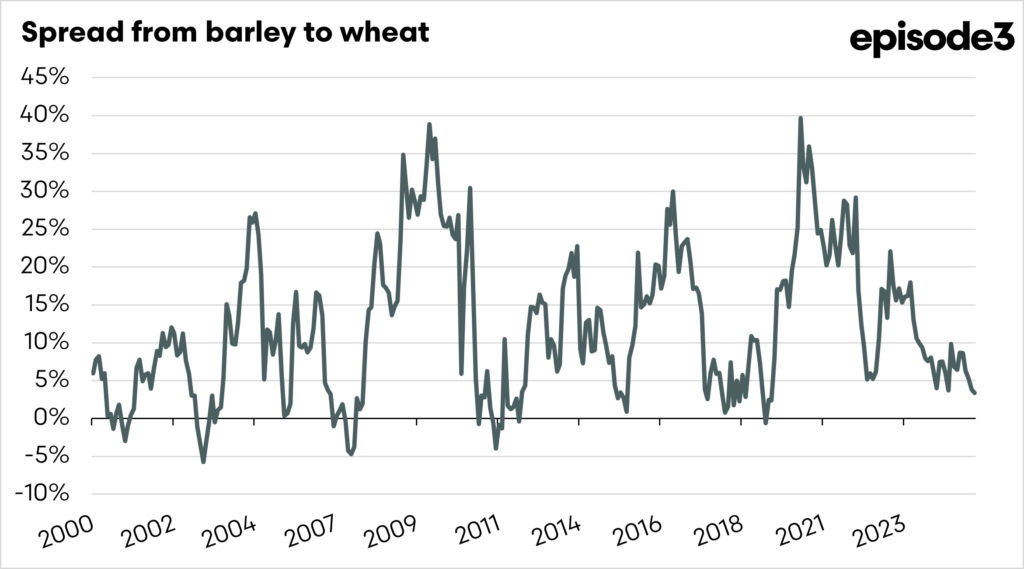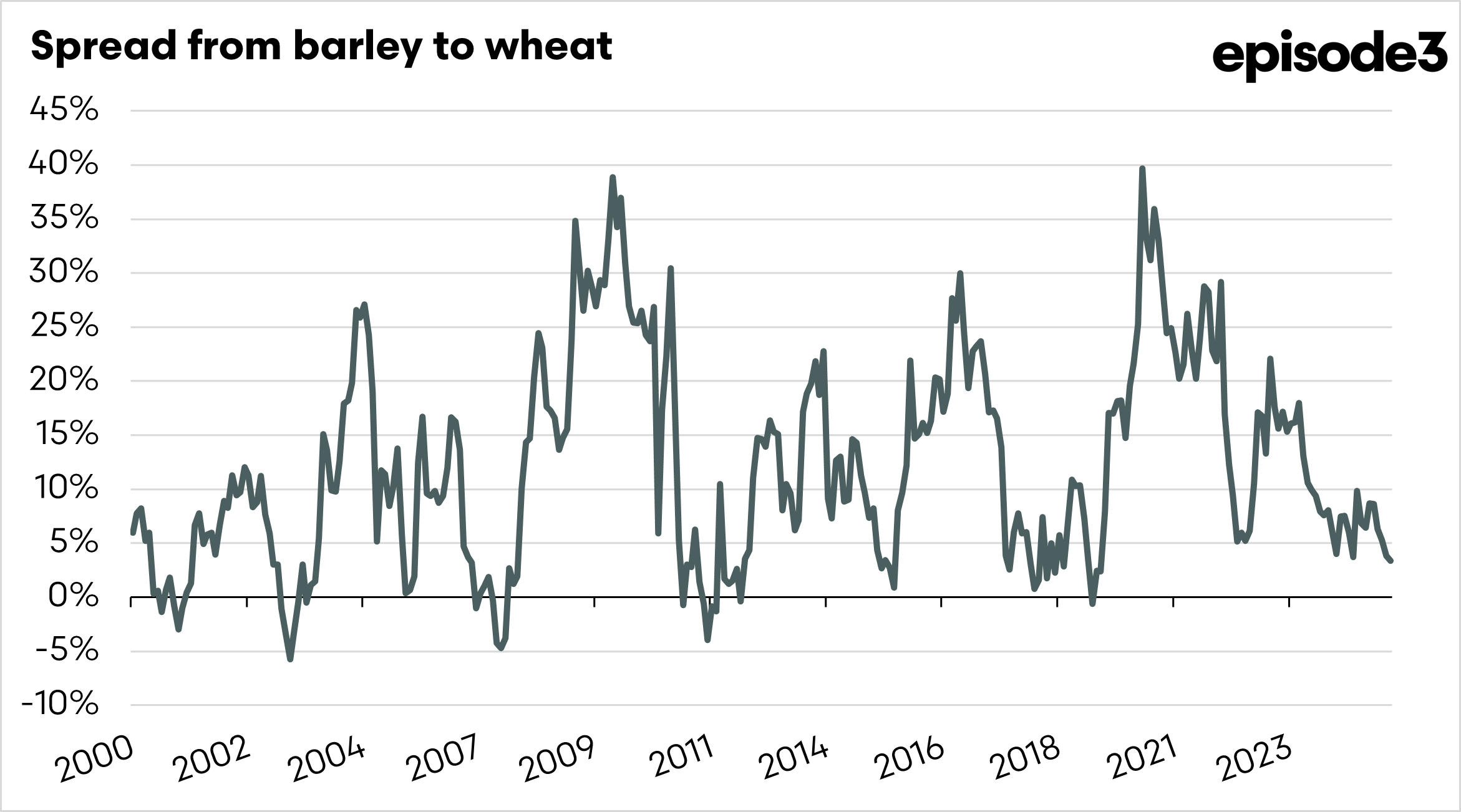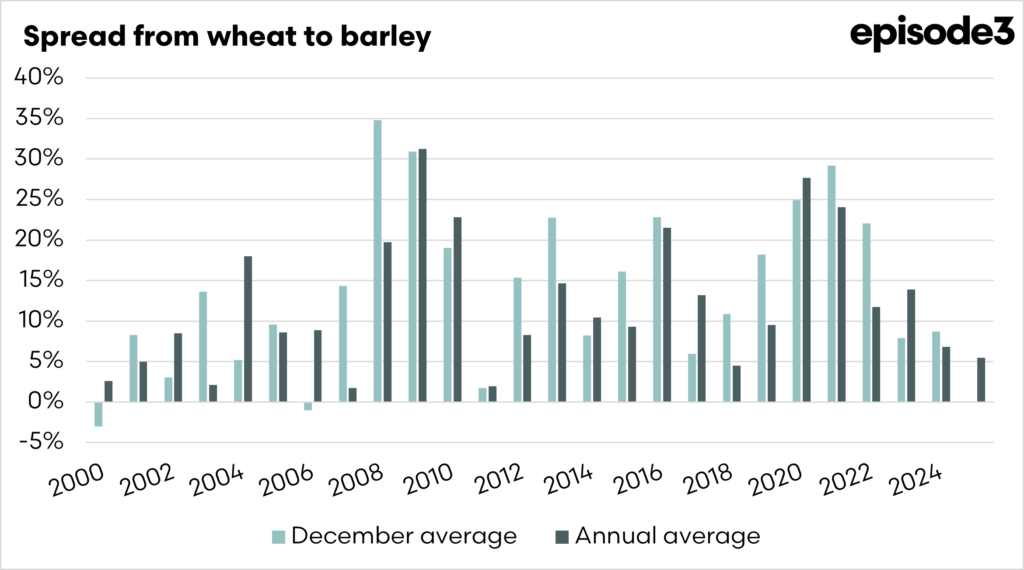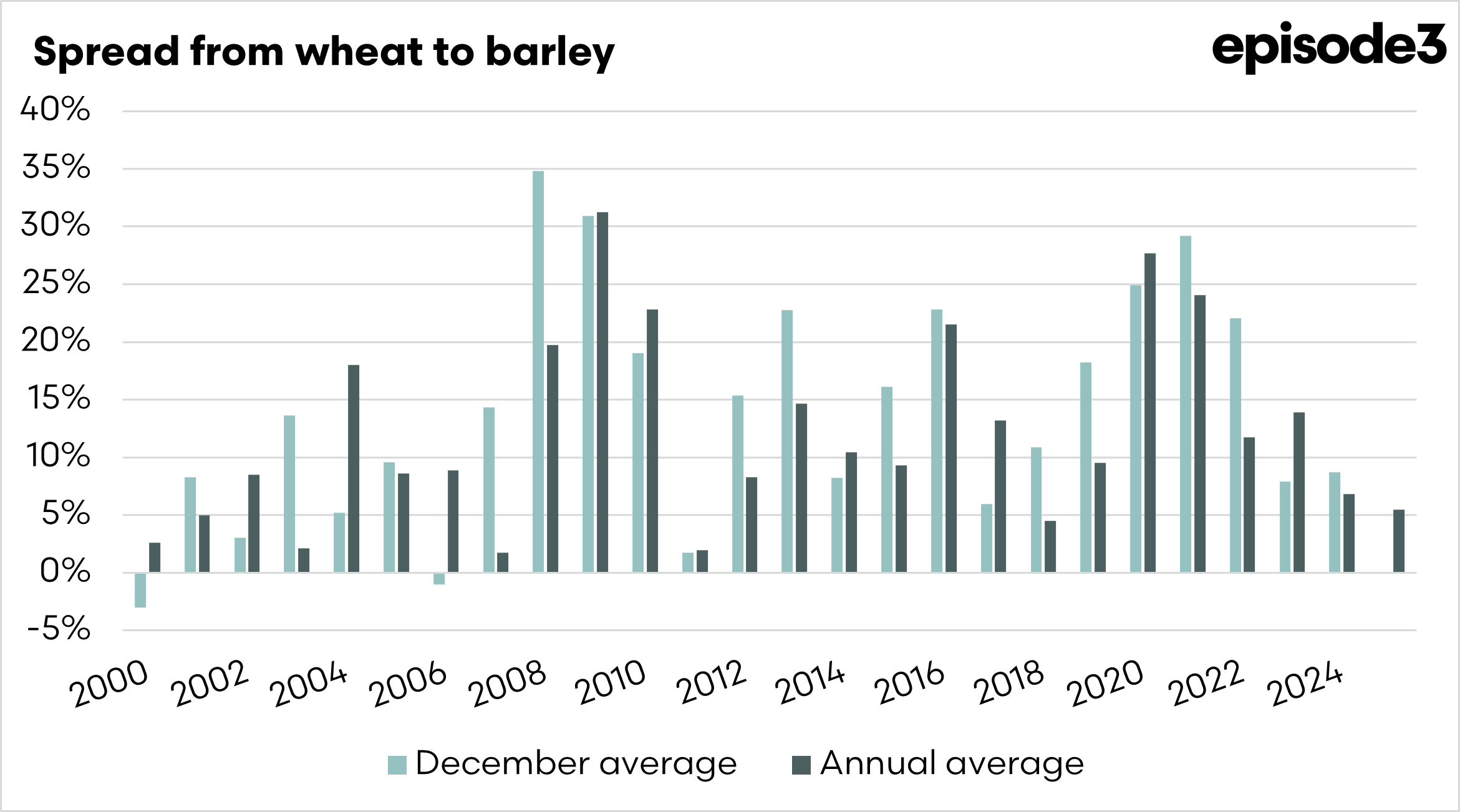Where does barley price compared to wheat?
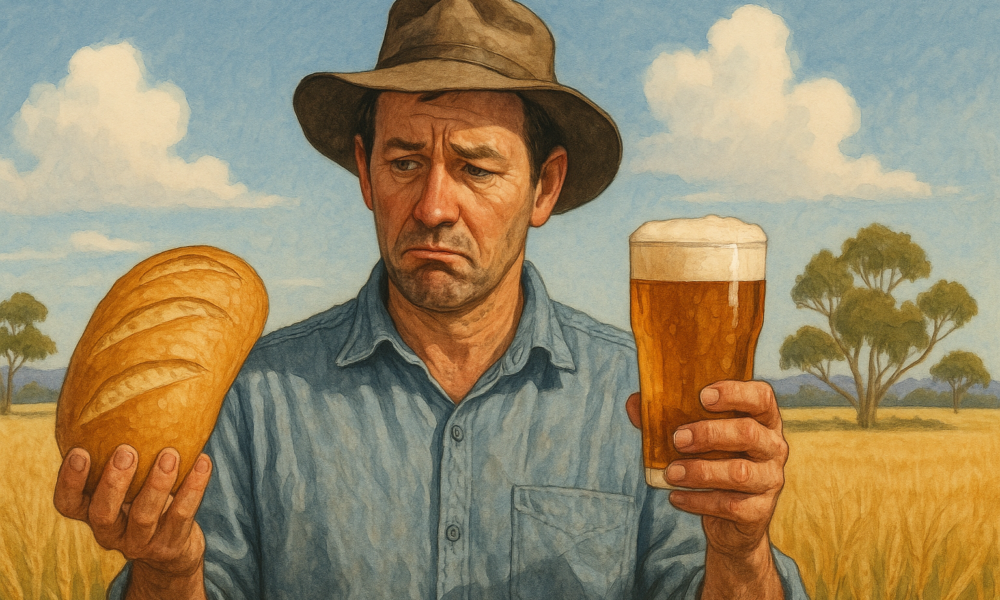
The Snapshot
- Feed barley will generally trade at a discount to wheat.
- This is due to wheat being nutritionally stronger.
- The average discount over the past 25 years is 12%
- The average December discount is 14%
- The current discount (for Victoria) is 3%.
The Detail
One of our readers reached out last week and asked a question about barley versus wheat. He wanted to know how barley and wheat have traded over a long period of time in Australia. I thought this was an interesting question and one worth analysing.
In reality, feed barley should generally trade at a discount to wheat because it has a lower nutritional value. Wheat is a much more efficient feed grain, especially for pigs and poultry. Wheat will be prioritised unless it is at a discount.
The chart above shows the monthly average price for feed barley and ASW wheat. In this analysis, I am using Victoria. You can see that generally, feed barley is priced below ASW. At times, the price will come to parity, which tends to be when the country is suffering through drought. During drought, feed consumers want to get volume in.
What is really important is ensuring that the discount doesn’t become too large.
This chart above shows the spread between F1 barley and ASW, as a monthly average. There were some extremes when ASW went to a huge premium, such as during the height of the Chinese tariff on Aussie barley. These extremes, when the market went close to a 40% premium for ASW, were unusual.
The average wheat premium is 12% over the past 25 years.
In the chart above, I have displayed the annual average and the December average. Typically, most people will be selling their grain during harvest, so December is a decent time point to look at.
The average discount to barley for December is 14%. In general terms, we need to be prepared for barley to be trading at a discount; it is just when the discount becomes extreme that we need to be concerned.
At the moment, barley is trading in Victoria at only a 3% discount, which is well below average. This could be down to the continued dry conditions in the south.

